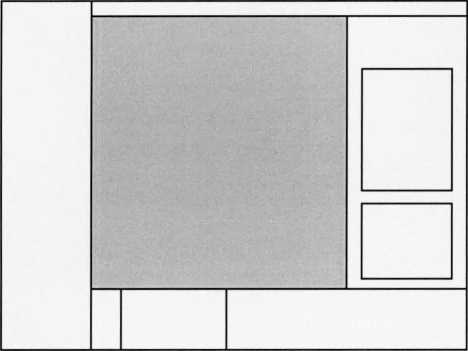uses saturated colours and a range of different hues. The central screen is a
multimodal space without written elements. Further in contrast to the persistence and
stability of the ‘frame’, the central screen is a place of change and movement.
The empirical world displayed in the central screen mediates and provides the
evidence that ‘fills-in’ the scientific concepts realised linguistically in the ‘frame’, in
this case ‘states of matter’.

6.7 The ‘screen within the screen’ shown in grey-scale
In order to analyse and discuss how the modes of image, colour and movement are
rhetorically orchestrated to construct ‘states of matter’ I focus on the default starting
point, that is the transformation from a solid to a liquid. The representation of the
transformation from a solid to a liquid is typical of the CD-ROM’s use of the modal
resources of image, colour and movement in the central screen.
The Construction of the Entity ‘States of Matter’ on the Screen
The written elements of the ‘frame’ represent each ‘state’ in the form of scientific
notation; for instance the notation ‘solid -> liquid’ is used rather than the everyday
term ‘melting’. The visual representations of ‘states of matter’ that are displayed in
the ‘screen within the screen’ serve to ‘fill-in’ the written terms with meaning. These
221
More intriguing information
1. What should educational research do, and how should it do it? A response to “Will a clinical approach make educational research more relevant to practice” by Jacquelien Bulterman-Bos2. Knowledge and Learning in Complex Urban Renewal Projects; Towards a Process Design
3. Fighting windmills? EU industrial interests and global climate negotiations
4. The name is absent
5. Benchmarking Regional Innovation: A Comparison of Bavaria, Northern Ireland and the Republic of Ireland
6. The open method of co-ordination: Some remarks regarding old-age security within an enlarged European Union
7. A Pure Test for the Elasticity of Yield Spreads
8. Partner Selection Criteria in Strategic Alliances When to Ally with Weak Partners
9. Licensing Schemes in Endogenous Entry
10. The name is absent